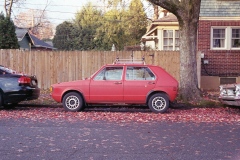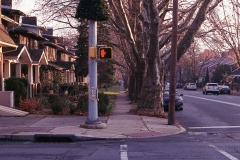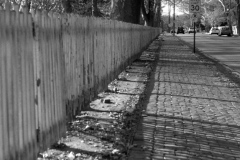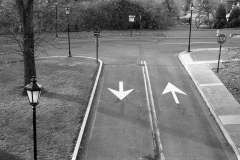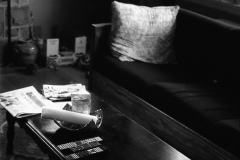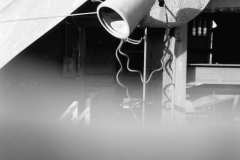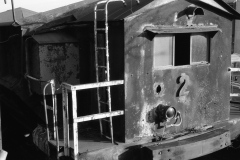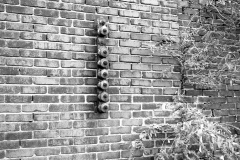When I was about 15, my Dad came home with a Voigtländer Vitessa found in my grandmother’s basement. In the 1950s and 60s, my grandfather handled European imports with an office out by Kennedy Airport. While I have very few memories of Granpa Nick, I still remember the Grundig stereo console, the Olivetti Lettera typewriter, the Phono Trix portable reel-to-reel and the Bavarian china in my grandparents’ house in Queens.
I knew little about cameras and photography then, but I was up for trying to see if the old Vitessa still worked. It was a folding camera – the lens was behind two leather-covered doors which opened outwards – and had a large “plunger” sticking up from the top that advanced the film and cocked the shutter. It had a rudimentary light meter at the top (which I didn’t understand), a 50mm f2.8 lens (which I also didn’t understand the significance of) and a rangefinder (which I eventually figured out.) The first roll I shot with it was a roll of Agfachrome (of which only one slide remains) and later had some fun taking pictures of friends and landscapes. My results were very mixed (photographer’s fault, not camera’s) so I put it aside.
Along the way, the Vitessa got lost – my dad might have pitched it, or I might have left it at a friend’s house, or it may have gotten left behind during one of the many moves my young family made during our first five years.
Over the intervening years, I became a Nikon shooter, then went (nearly) whole hog into the digital realm, only to rediscover a love of film cameras during the past decade. And as I started shooting more film, I found myself missing the potential that the Voigtländer could have offered. I toyed with getting another Vitessa, but finding one in good shape that worked – and that I could afford – was proving very difficult. Even though my daughter found an inoperative Bessamatic SLR at a “yard sale” at Precision Camera in Austin, which now decorates my living room, it seemed Voigtländer would remain a brand I wouldn’t be shooting again.
Then a few weeks ago, while perusing the Roberts Camera/UsedPhotoPro.com site, I came across a Voigtländer Vito CLR rangefinder for $35. It looked in okay shape (UPP does a good job with their item photos) and it was warranted for 180 days, so I figured it was worth a shot. If nothing else, it would be fun to try out, and if it didn’t work I could return it or place it next to its Bessamatic brother on a shelf.
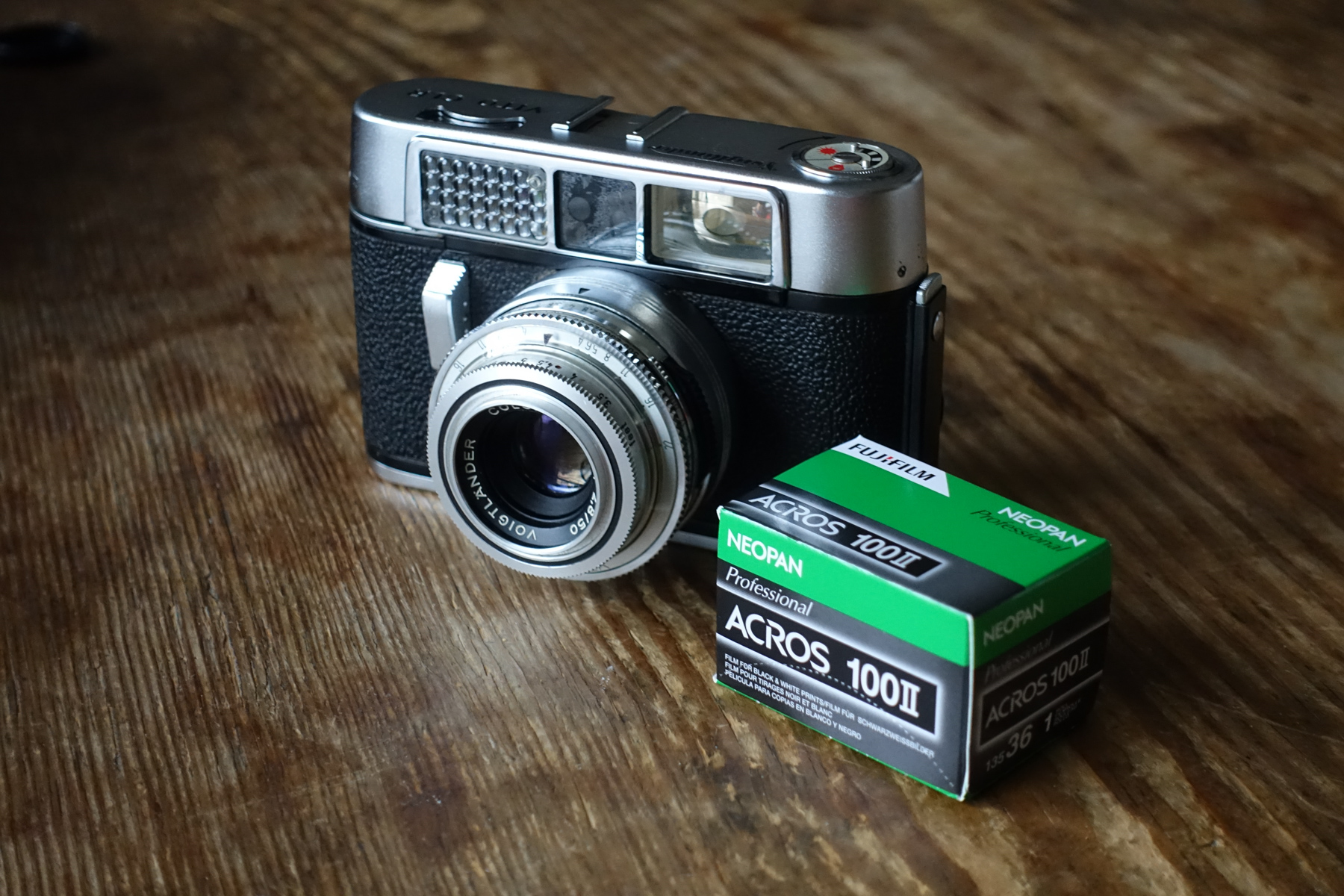
The Vito CLR is a 35mm rangefinder with a coupled light meter and rangefinder. It’s part of the Vito CL line of cameras, made from 1962-68 (or thereabouts…) There several different iterations of the CLR – standard and deluxe – with changes made throughout its production run. The “deluxe” appears to be mostly cosmetic. Mine’s a standard.
The manual I downloaded from orphancameras.com (thanks, Mr. Butkus!), is for the CL and CLR. The CL appears to have just the light meter and not the rangefinder (more on that below), so I’m guessing the CLR indicates Light meter and Rangefinder…
Early CLRs featured a Lanthar 50mm f2.8 lens. Later ones (of which mine is) have a Color-Skopar 50mm f2.8 lens, coated with four elements in three groups. The Pronto-LX shutter assembly has speeds of 1/15 to 1/500 second, plus B. The focus scale on my copy is in feet, ranging from about 3 ft to infinity. It has what feels like pretty long throw – about a half-turn from close to infinity.
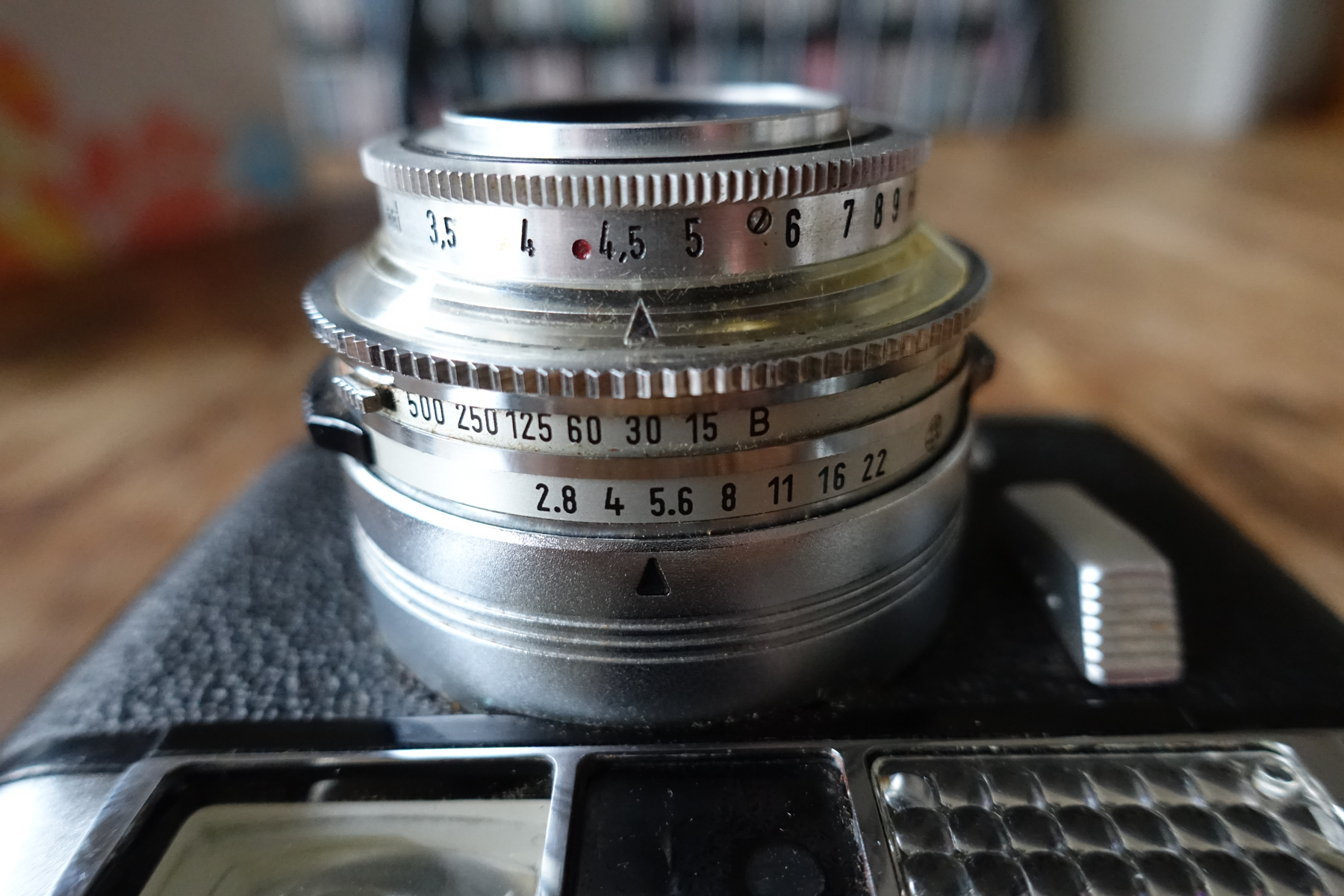
The Vito CLR also features a selenium light meter which often don’t work on cameras of this vintage; remarkably, this one does. On this version, the readout is on the top panel, parallel with the front of the camera (other versions have the readout that runs perpendicular to the axis of the camera, along the cold shoe.) Being a selenium meter, this camera doesn’t require batteries to operate…a good thing, since many photographic instruments from this time period (cameras, light meters, etc.) used mercury batteries that are no longer available.
The ring for setting the shutter speed also includes the ASA setting. When first loading the camera, set the film speed by pressing the small silver button on the shutter speed ring and line up the red dot with your film’s ASA (there’s also a DIN scale). You can set the speed from 10 to 800 ASA.
Setting the exposure is straightforward. The meter readout has a red arrow and a white needle. First set the shutter speed using the middle ring. To get the correct exposure, then set the aperture, lining the red arrow and the white line up. Be careful not to cover the honeycomb light cell window on the front while setting exposure.
Most Vito CLRs mirror this readout in the viewfinder, making it possible to set exposure while framing your shot. My Vito may have been monkeyed with over the years (it’s missing one of its top screws) and does not have the readout in the viewfinder. When looking through the German version of the manual for the CLR, it doesn’t seem to indicate that the meter is visible in the viewfinder, so I’m not entirely sure if it was manufactured that way. Anyway, not a big deal for me – the top readout is still perfectly usable and it works.
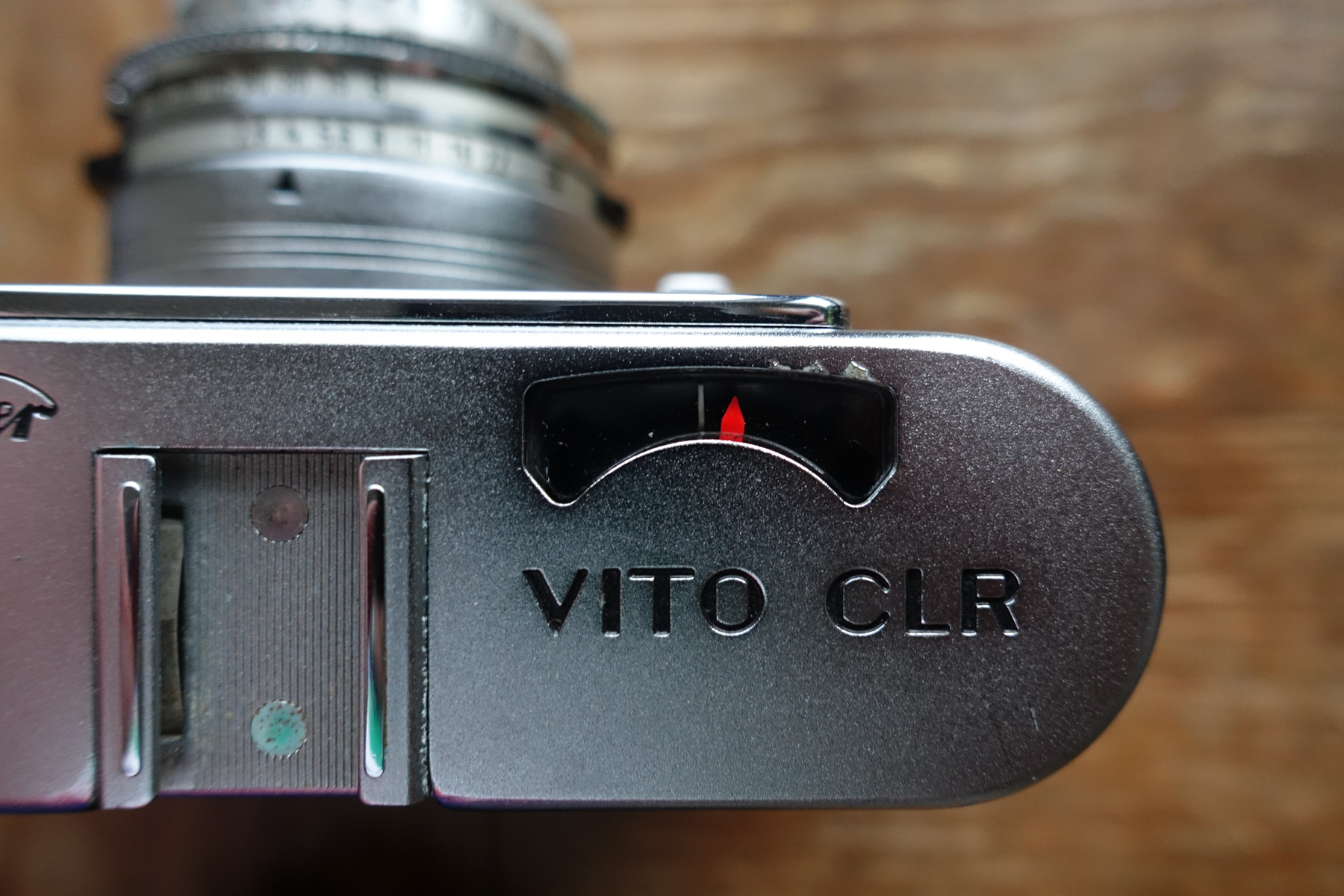 Film loading is straightforward, too, although a little quirky. Press the lever just below the viewfinder to pop up the film rewind knob, then press the two tabs on the left of the camera to release the back. Insert the film leader in the slot on the take up spool until the small hook catches the film. Then pull the cartridge across the film track and secure in the cassette chamber. Wind it on a bit, then close the back and press the film rewind knob back down.
Film loading is straightforward, too, although a little quirky. Press the lever just below the viewfinder to pop up the film rewind knob, then press the two tabs on the left of the camera to release the back. Insert the film leader in the slot on the take up spool until the small hook catches the film. Then pull the cartridge across the film track and secure in the cassette chamber. Wind it on a bit, then close the back and press the film rewind knob back down.
On the bottom plate is the film counter, which you can set to either 20 or 36 exposures. It then counts backward – a bit atypical, but not a bad way to shoot. It tells you how many shots you have left. I tend to shoot 24 exposure rolls of color, so I do have to do a bit of math when using a counter like this – set it for 36, and know I have until it reaches 12.
The top of film rewind knob has a film-type reminder, with a sun (daylight color), a lightbulb (tungsten color) and a black and white pattern (black and white film, of course…) The instructions say you can turn this to remind yourself what kind of film your using, but once again, mine’s not perfect – the diagram doesn’t spin (it appears that the camera may have been dropped on that side at one point.) Still, not a deal-breaker – for old cameras that don’t have a memo holder on the back, I simply put a part of the film box end into the cold shoe on the top to remind me what I’m shooting.
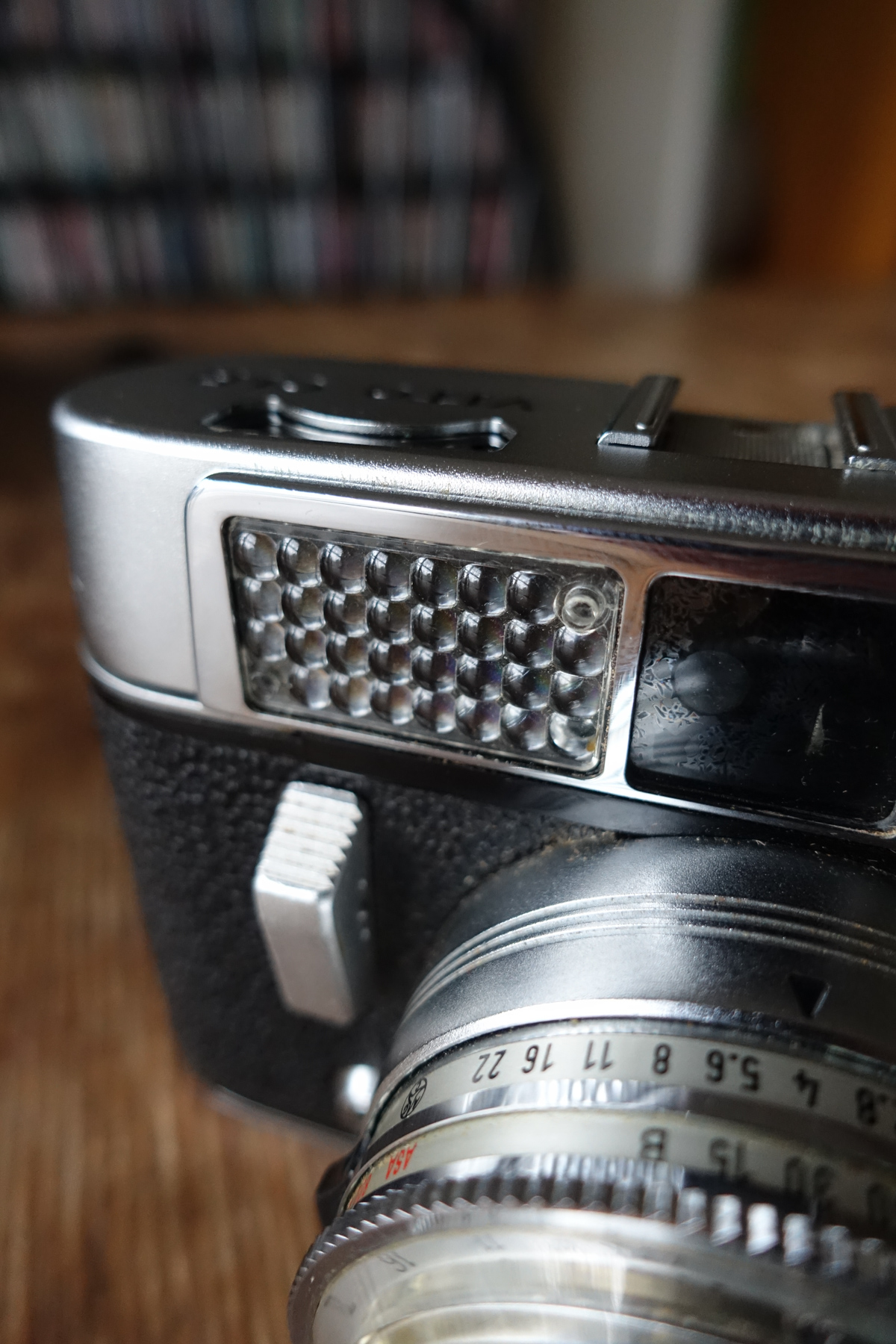 The shutter release isn’t on the top panel like on most cameras. Instead, it is on the front of the camera, next to the lens. This took a little getting used to, and when you see my B&W shots below, I realized that I was getting my fingers in front of the lens when taking vertical/portrait shots. The shutter feel is nice and the sound is distinctive. The film wind stroke is long – all the way around to the front of the camera – but also feels satisfying and precise.
The shutter release isn’t on the top panel like on most cameras. Instead, it is on the front of the camera, next to the lens. This took a little getting used to, and when you see my B&W shots below, I realized that I was getting my fingers in front of the lens when taking vertical/portrait shots. The shutter feel is nice and the sound is distinctive. The film wind stroke is long – all the way around to the front of the camera – but also feels satisfying and precise.
The viewfinder is very bright, and in my copy the focus patch is a little dim but serviceable. Focusing isn’t quick on this camera, but once the images are lined up, it does prove accurate. The silver frame lines in the viewfinder are visible in most kinds of light, and the framing seems accurate, too. And for those who prefer zone focusing, there are indications on the lens for portrait (distance about 4-1/4 feet), group (about 11 feet) and landscape (about 33 feet). The manual provides a depth of field chart for each of these distances; at f/8, set to “group,” everything from 7-1/2 to 23 feet would be in focus (f/8 and be there?).
Shooting the Vito CLR
I enjoyed shooting the Vito CLR. For my first foray, I loaded a roll of the very forgiving Kodak Ultramax 400, set the ASA to box speed, and went for a walk in the late afternoon around my work neighborhood. The late November/early December afternoon light here in Pennsylvania is low, but workable. For each shot, I pointed the camera to my subject, looked at the light meter readout on the top panel, set shutter speed and aperture and took my shots. Most of these are between 1/60 and 1/250 of a second, at f/4 through f/11. Most frames were well exposed or a little over exposed (which fortunately, Ultramax likes), and the focus appears accurate. (Tech note: these were processed in Cinestill’s CS-41 and scanned at 2400 dpi on an Epson V550 scanner). There’s also a few interior images, where the exposure was good, but either my focus or my shutter speed stole sharpness.
My next roll was Fuji Acros II 100 B&W. I recently picked up a 5-pack of the film from Adorama for less than $6.00 a roll (turned out it was short-dated), but having been impressed by a roll I’d shot a few weeks before through my Nikon N70, I figured I’d give it a try. I set the camera to ASA 100 (box speed), and this time set out for a few of my favorite spots here in my hometown. This roll seemed a tad over exposed, but the detail came through pretty well, and in general, I’m pretty happy with the results.
You’ll notice on a number of these B&W shots the telltale smudge of digital interference (yep, I got my finger in the way) on what would have otherwise been good shots. I think this is a function of the shutter release being on the front of the camera instead of the top. It only occurred on vertical shots, but it’s something I’ll have to keep in mind while shooting.
This particular Vito CLR is definitely in “user” condition, but I’m happy with the shots I was able to make. For those of you who shoot film to “slow down,” this camera is right up your alley. You need to set exposure before bringing the camera to your eye (although once set for a particular scene, you’re good to go for several shots). Focusing requires concentration and effort, and since this camera was probably a closet find, all the rings are a little stiff. There’s debris in the rangefinder path, but it is still focusable. The important things? The lens is clear with no haze or fungus, shutter speeds sound right, the dials still work, and it can still create nice images more than a half century after it was made.
Even though it’s not the Vitessa I really wanted, this old Vito made me happy to be shooting a Voigtländer again. I wonder if my grandfather was responsible for getting this one into the U.S…




